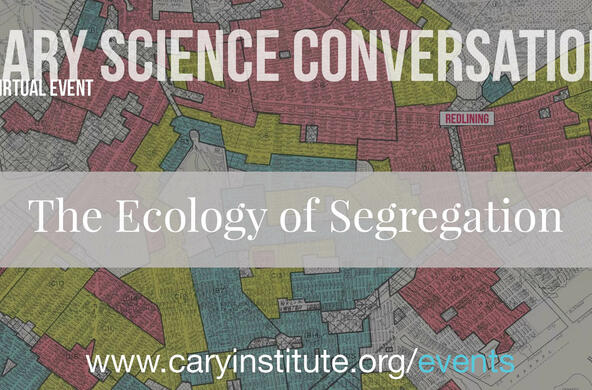Ecologists have largely avoided race and racism as ecological factors, but events in 2020 have made it impossible to continue to ignore these impacts. This does not mean that ecologists have failed to contribute to the scholarship and activism of environmental justice. But the time has come for the science to more fully acknowledge the existence and impact of systemic racism, especially in the US. Acknowledging this fact in the various specialties within our discipline would complement the scholarship on environmental justice, and support the expanding efforts of ESA to be more racially diverse and inclusive.
We advocate for a new research agenda, the ecology of segregation. This entails an approach to data collection, model building, and practical application that recognizes the following. First, institutionalized racism, and the spatial heterogeneity that it creates for where people live and work, are pervasive in the US and elsewhere. Second, the origins and implications of, as well as changes in, such spatial patterns occur at various ecological scales ranging from populations to communities, ecosystems, and landscapes. Finally, racism is a system of formal and informal social norms that establishes a racial‐based power hierarchy; apportions sites, benefits, and hazards based on that hierarchy; and adopts mechanisms of resilience to maintain itself over time.
Consolidating these facts within a research agenda would facilitate the identification and formulation of broad guiding questions. What are the environmental consequences of institutionalized racism, including the spatial segregation of people by race? How do the environmental and social outcomes of, and the processes associated with, segregation influence one another? Answering these fundamental but so far largely unaddressed questions will boost ecological contributions to solving societal problems, such as those in climate adaptation, sustainability, and Earth stewardship.
The emergence of an ecology of segregation has been hampered by social assumptions. In the past, ecologists often considered ecological systems to be apart from human systems. Although ecologists gradually acknowledged that the two systems can and do influence each other, they often used simple social variables such as population density to indicate human impacts on ecosystems and employed assumptions that are now recognized as naïve: for instance, that everyone has equal access to money, information, and choice. However, as social–ecological science has matured, the idea that humans are components of, and not separate from, ecological systems has been widely accepted. An example of this maturation is the advice of social scientist Gary Machlis, who cautions that social–ecological models that exclude power, bias, greed, or corruption cannot yield convincing or realistic outputs. We explicitly add racism to this list.
Ecologists’ attention to race may have been hampered by the fact that the racist foundations of segregation and environmental hazard are often obscure. The mechanisms of US racial power have been hidden in idealistic language such as “post‐racial”, euphemistic constitutional structures such as the “three‐fifths clause”, and seemingly race‐neutral legal arrangements like those associated with residential zoning. Ecologists have been as misled by these pervasive social devices, as have many other groups. Attention to race and racism as ecological factors may also have been dampened because so few ecologists have “lived experience” with them. (Full disclosure: One of the authors is Black.) Consequently, one of the most fundamental and widespread aspects of US landscapes has been virtually neglected as an ecological factor.
Pursuing research on the ecology of segregation adds a social–ecological feedback that has been missing in environmental justice research. As a research topic, the ecology of segregation has several benefits. (1) It represents a broad intellectual domain, given segregation’s pervasiveness in the US over space and time and how it likely affects ecosystem structure and function. (2) It aligns with existing spatial scales within ecology. (3) It can strengthen the connection between the social and biophysical sciences as well as stimulate interdisciplinary research into the history and ongoing legacies of segregation. (4) It offers a gateway to increasing the racial and ethnic representation within the science, but does not limit itself to study only by researchers of color. (5) It may provide new practical “hooks” for ecology; namely, an improved understanding of the environmental outcomes of segregation may help empower underrepresented communities, inform policy, disrupt the stubborn resilience of racism, and suggest options for restoring habitats damaged by its legacies.
Human agents and institutions act within social–ecological systems, and the outcomes of their actions cannot be understood as independent of those systems. The ecology of segregation is a new system science waiting to be born.
Citation
An ecology of segregation. Steward TA Pickett and J Morgan Grove. Front Ecol Environ 2020; 18( 10): 535– 535, https://doi.org/10.1002/fee.2279






